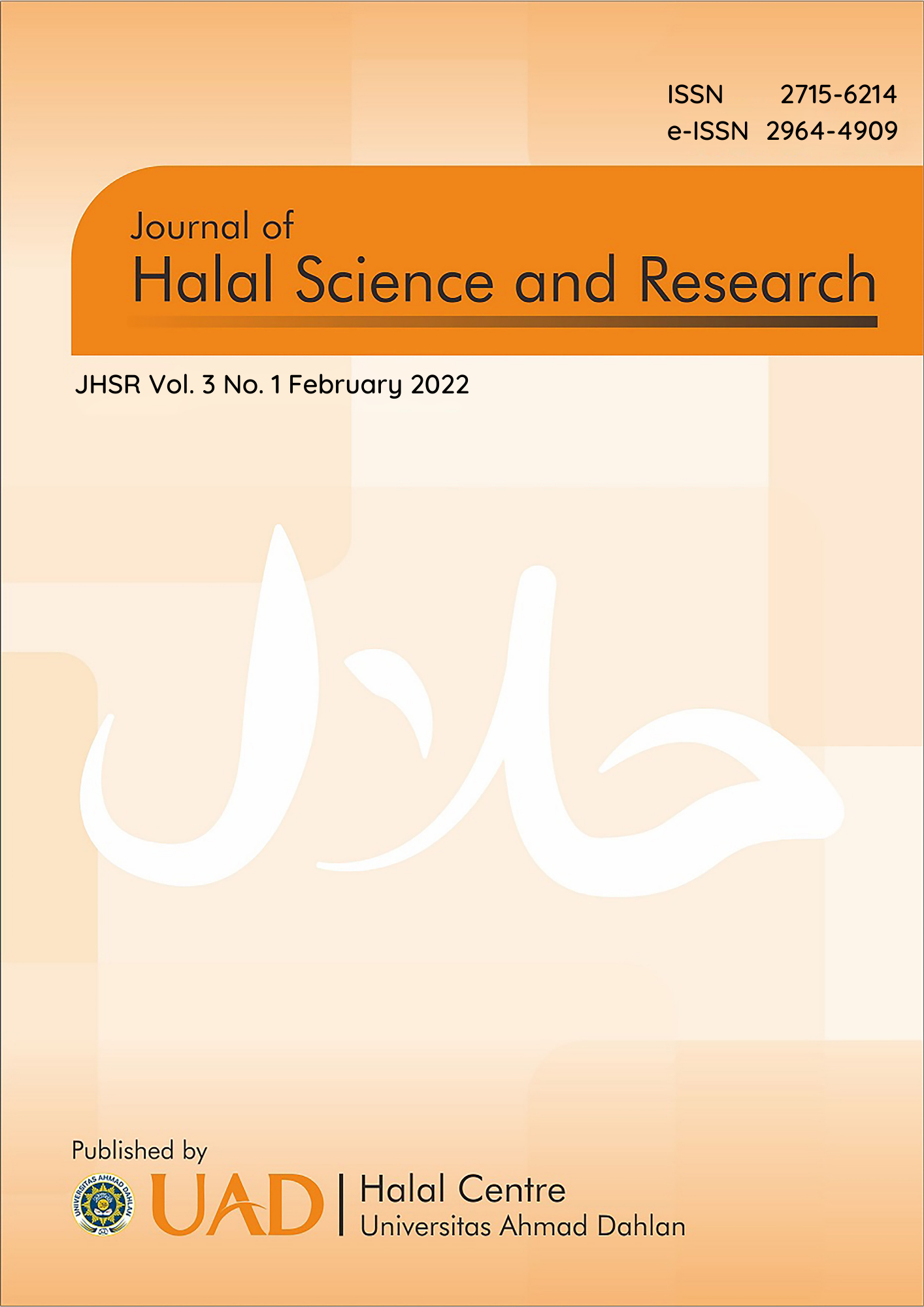An informative search of dyes content rhodamin b in blusher, lipstick, and eyeshadow cosmetics
DOI:
https://doi.org/10.12928/jhsr.v3i1.6844Abstract
Decorative cosmetics are preparations used to beautify the appearance and cover up flaws in the skin, such as blemishes on the skin so that the user looks fresher. Examples of decorative cosmetics include lipstick, blusher, eye shadow, and so on, which are usually given the addition of synthetic dyes such as rhodamine. The addition of rhodamine B dye to cosmetics is not permitted. However, the use of dyes is still widely abused by irresponsible people. This review article aims to see whether Rhodamine B dye is present in decorative cosmetics such as blusher, lipstick, and eye shadow. I am writing review articles by searching using search engine assistance, namely Google Scholar, PubMed, and Science Direct. A literature search was performed using the following keywords or terms and strategies: "analysis" OR "determination" OR "Rhodamine B" AND "cosmetics" AND "lipstick" OR "blush" OR "eye shadow.” Data used in the review of this article refers to studies or studies that have been carried out previously, namely in the form of articles or journals for the last five years, from 2015 to 2019, and other sources such as textbooks and these data. The results obtained in the search for articles were from 125 journals. They are then selected based on predetermined inclusion criteria. Seven journals fall into the inclusion criteria. The sample criteria include registered BPOM, not registered with BPOM, red and inexpensive color. The search results concluded that there are still many rhodamine B coloring agents in decorative cosmetics circulating in Indonesia, such as blush, lipstick, and eye shadow. Dede Komarudin did the highest levels of Rhodamine B in Siva Fauziah, Ratih Pramintari (2019) with a blush on a 776.98 μg/mg sample taken from Jatinegara Market, Jakarta.
Downloads
Published
Issue
Section
License
Copyright (c) 2022 Universitas Ahmad Dahlan

This work is licensed under a Creative Commons Attribution-NonCommercial-ShareAlike 4.0 International License.
Authors who publish with JHSR (Journal of Halal Science and Research) agree to the following terms:
1. Authors retain the copyright and grant Universitas Ahmad Dahlan right of first publication with the work simultaneously licensed under a Creative Commons Attribution-NonCommercial-ShareAlike 4.0 License (CC BY-NC-SA 4.0) that allows others to share (copy and redistribute the material in any medium or format) and adapt (remix, transform, and build upon the material) the work for any purpose, even commercially with an acknowledgement of the work's authorship and initial publication in Universitas Ahmad Dahlan.
2. Authors are able to enter into separate, additional contractual arrangements for the non-exclusive distribution of the journal's published version of the work (e.g., post it to an institutional repository or publish it in a book), with an acknowledgement of its initial publication in Universitas Ahmad Dahlan.
3. Authors are permitted and encouraged to post their work online (e.g., in institutional repositories or on their website) prior to and during the submission process, as it can lead to productive exchanges, as well as earlier and greater citation of published work (See The Effect of Open Access).

This work is licensed under a Creative Commons Attribution-NonCommercial-ShareAlike 4.0 International License.




